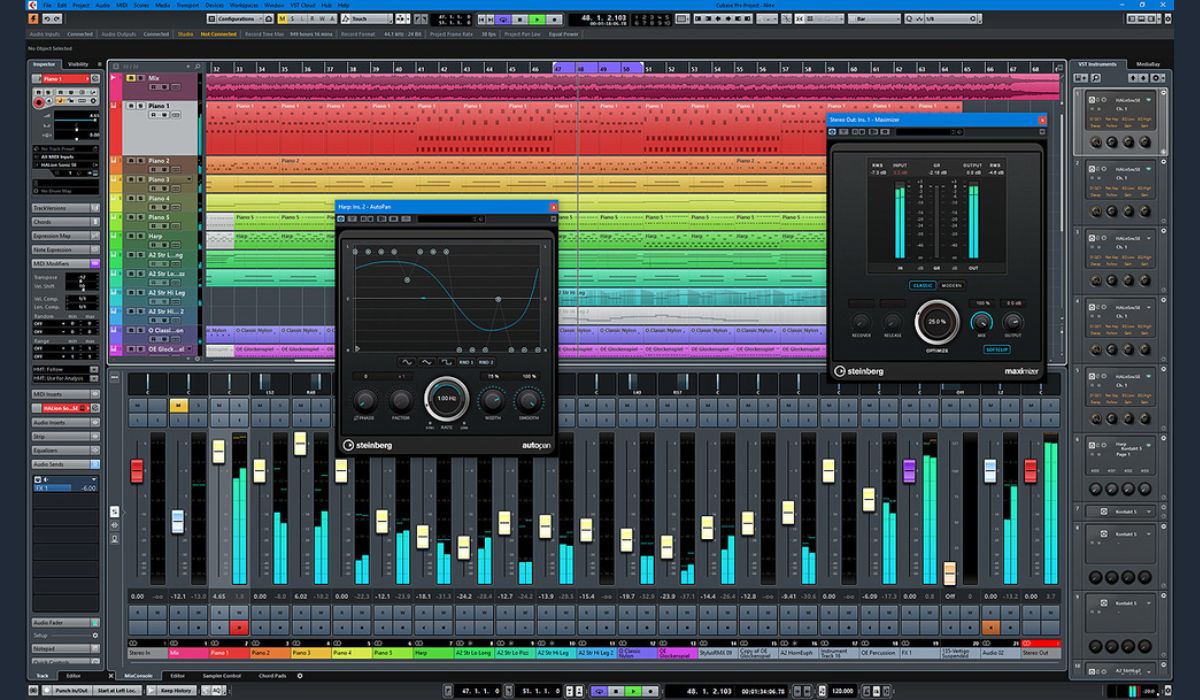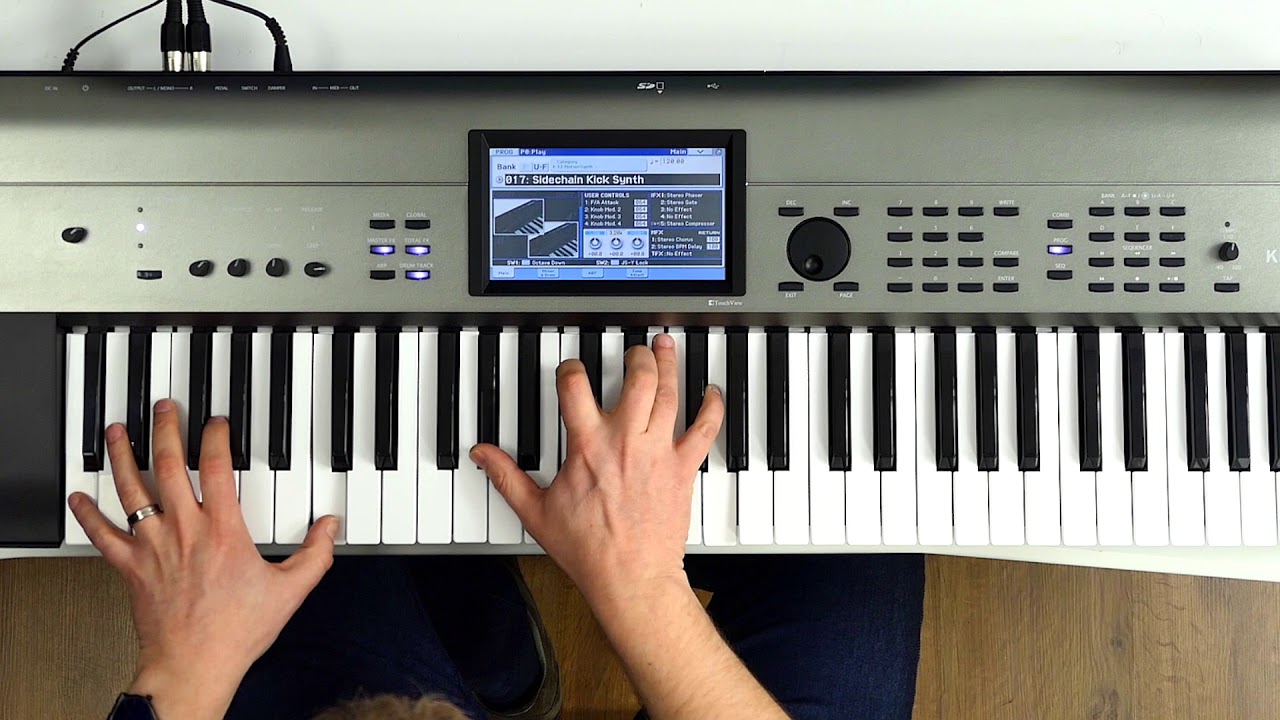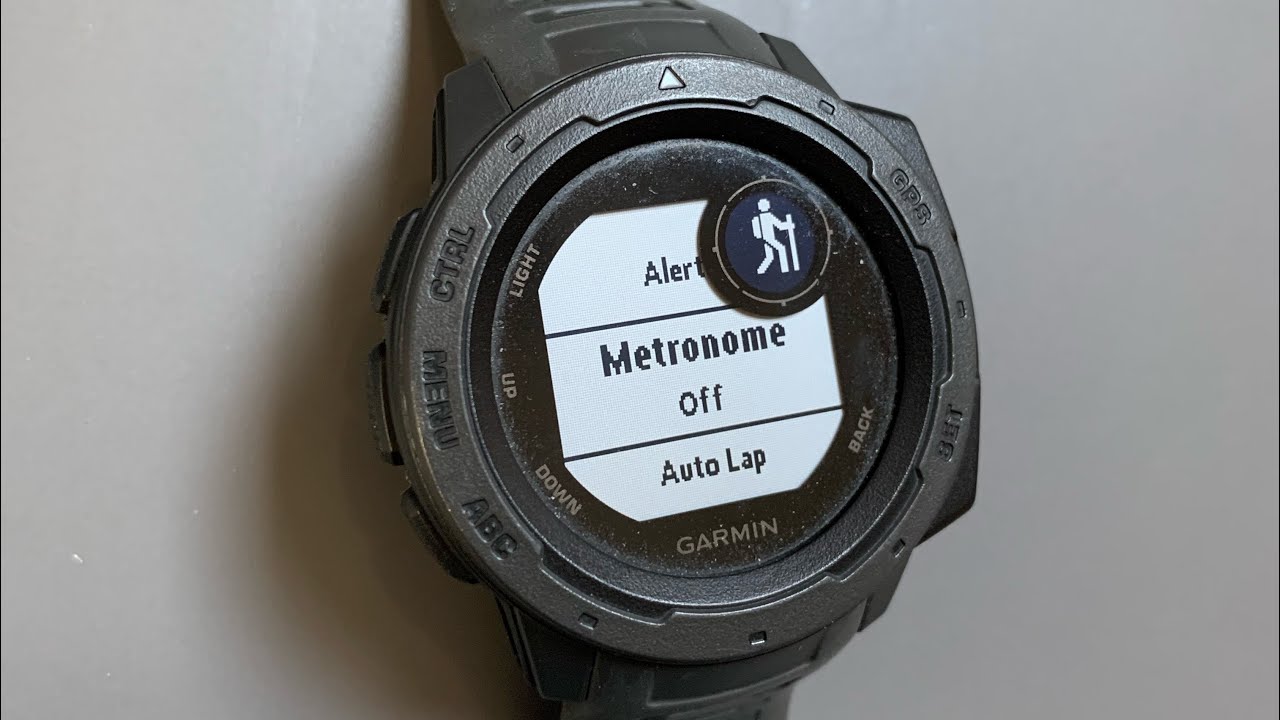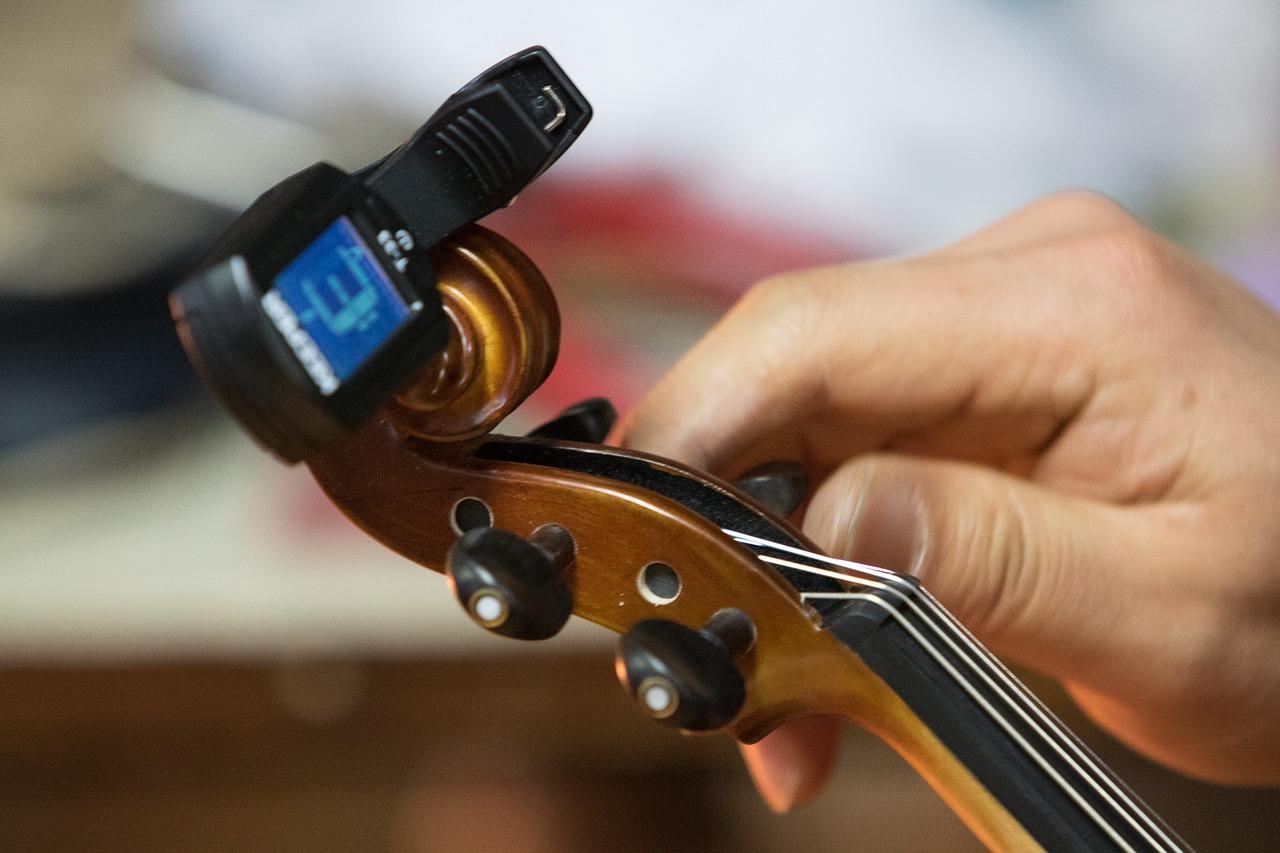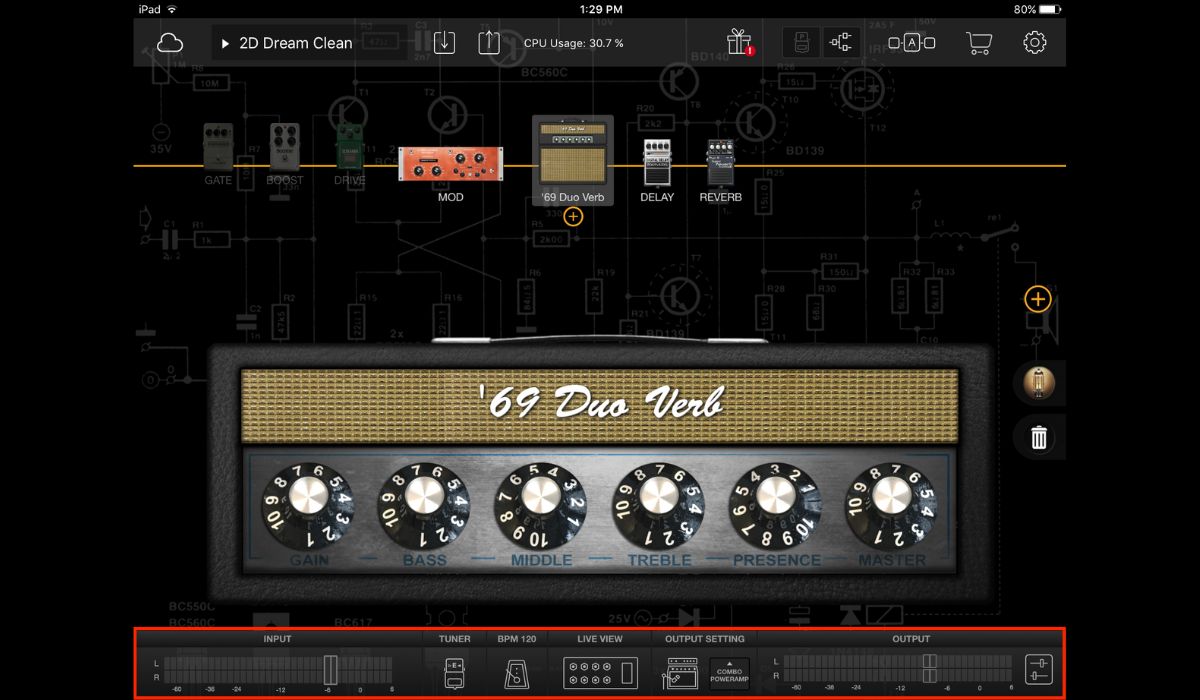Home>Production & Technology>Metronome>What Is A Metronome Used For?
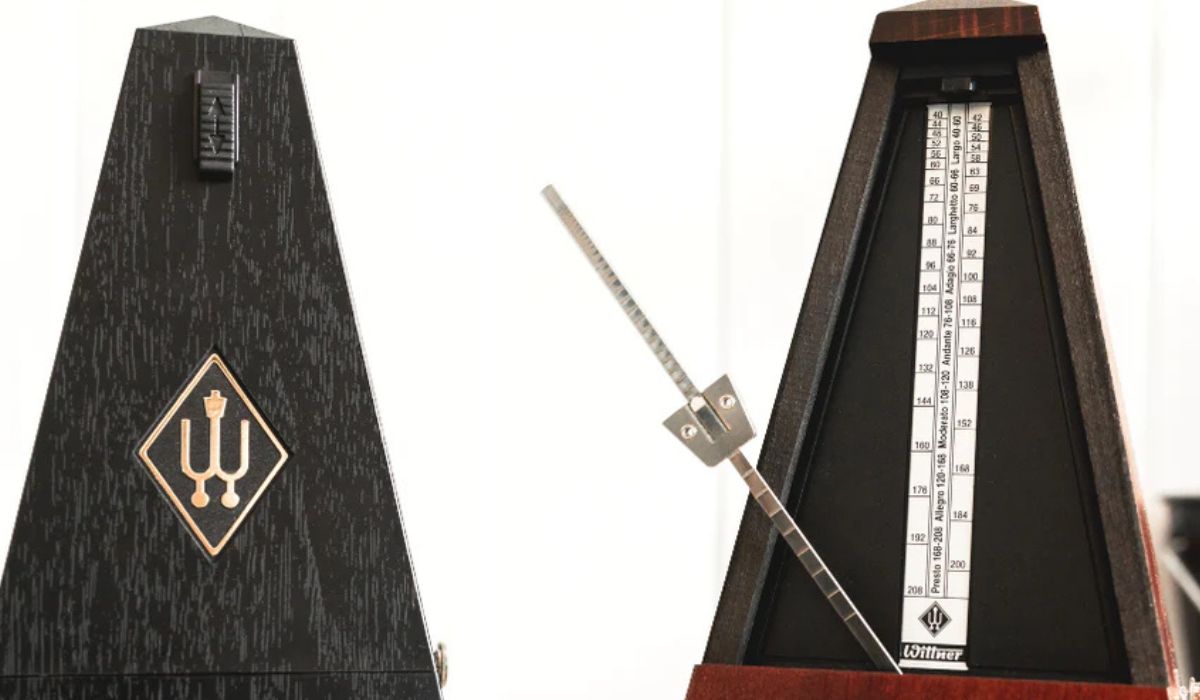

Metronome
What Is A Metronome Used For?
Published: January 13, 2024
Discover the importance of using a metronome for musicians and how it helps improve timing and rhythm. Find out why a metronome is an essential tool for practice sessions.
(Many of the links in this article redirect to a specific reviewed product. Your purchase of these products through affiliate links helps to generate commission for AudioLover.com, at no extra cost. Learn more)
Table of Contents
Introduction
A metronome is a device used by musicians to keep time and maintain a consistent tempo while practicing or performing music. It is an essential tool for musicians of all levels, from beginners to professionals, and is commonly found in music studios, practice rooms, and performance venues.
The word “metronome” is derived from the Greek words “metron,” meaning “measure” or “time,” and “nomos,” meaning “law” or “rule.” As its name suggests, the metronome provides a regulated beat, serving as a rhythmic guide for musicians to follow.
Traditionally, metronomes were mechanical devices consisting of a pendulum or a rotating wheel that produced audible clicks or ticks at a set interval. However, with advancements in technology, electronic metronomes and metronome apps have become more popular, offering additional features and flexibility.
In this article, we will delve into the various aspects of metronomes, including their definition, role in music, benefits, applications, and tips for effective use. Whether you are a musician looking to improve your timing or a music lover curious about this fascinating musical tool, read on to discover the world of metronomes.
Definition of a Metronome
A metronome is an instrument or device that produces a steady, regular beat or pulse. It is specifically designed to help musicians maintain a consistent tempo while practicing or performing music. By providing a rhythmic reference, the metronome helps musicians stay in time and develop a strong sense of timing and rhythm.
Traditionally, metronomes were mechanical devices that used a series of weights, springs, and gears to produce an audible beat. These mechanical metronomes typically had a swinging pendulum or a rotating wheel that emitted a clicking sound at a specified tempo. The user could adjust the speed of the clicks by moving a weight along the pendulum or changing the tension of the spring.
Modern metronomes have evolved to include electronic and digital versions. Electronic metronomes often have a built-in speaker or headphones output and allow for precise adjustment of tempo. Some electronic metronomes also offer additional features such as different time signatures, accentuations, and even visual cues like flashing lights or a bouncing ball on a screen.
With the rise of smartphones and tablets, metronome apps have become increasingly popular. These apps transform the mobile device into a versatile metronome, offering a wide range of customizable settings and features. They often provide a visual representation of the beat, allowing users to see and hear the tempo simultaneously.
In summary, a metronome is a musical tool that produces a regular beat to help musicians maintain a consistent tempo. It can be a mechanical device, an electronic device, or a digital app, each with its own unique features and capabilities. The primary purpose of a metronome is to improve timing, rhythm, and overall musical performance.
Role of a Metronome in Music
The role of a metronome in music is paramount, as it serves as a guide for musicians to stay in time and maintain a consistent tempo. Whether you are a solo performer or part of an ensemble, using a metronome can greatly enhance your musical abilities and overall performance.
One of the key functions of a metronome is to develop a strong sense of timing and rhythm. By practicing with a metronome, musicians can train themselves to play in perfect synchronization with the beat. This is especially crucial in genres such as classical music, where precision and accuracy are highly valued.
A metronome also helps in building a solid internal pulse. By consistently practicing with a metronome, musicians learn to internalize the tempo and develop their own internal sense of rhythm. This is beneficial not only for staying in time during performances but also for improvisation and musical expression.
Using a metronome is particularly advantageous for musicians who struggle with tempo fluctuations. It provides a reliable reference point, ensuring that the speed of the music remains constant. This is especially important in ensemble settings, where all the musicians need to play in sync with each other.
Furthermore, a metronome can assist in improving technical proficiency. By coordinating their movements with the metronome’s beat, musicians can enhance their dexterity, accuracy, and precision. This is especially helpful for challenging passages that require fast and precise finger movements or complex rhythmic patterns.
Moreover, using a metronome during practice sessions can help musicians identify areas of weakness or inconsistency. It allows them to pinpoint sections that need extra attention and work on them diligently until they can execute them flawlessly at the desired tempo.
In summary, the role of a metronome in music is to act as a reliable timekeeper and rhythmic guide. It aids in developing timing, internal pulse, precision, and technical proficiency in musicians. By practicing with a metronome, musicians can improve their overall musicality and deliver more polished performances.
Benefits of Using a Metronome
Using a metronome offers numerous benefits to musicians of all levels. Whether you are a beginner learning the basics of rhythm or an experienced musician aiming for impeccable timing, incorporating a metronome into your practice routine can greatly enhance your musical abilities. Here are some key benefits of using a metronome:
- Improved Timing: One of the primary benefits of using a metronome is the improvement in timing. The metronome provides a constant and consistent beat, helping musicians stay on track and develop a strong sense of rhythm. Regular practice with a metronome trains your internal clock and improves your ability to play in time.
- Consistency: A metronome ensures that you maintain a consistent tempo throughout your performance. It prevents unwanted tempo fluctuations and helps you stay in sync with other musicians in an ensemble or band. Achieving a consistent tempo is crucial for creating a cohesive and polished musical performance.
- Developing Speed and Accuracy: The precise and constant beat of a metronome can aid in building speed and accuracy in playing. By gradually increasing the tempo with the metronome, you can push yourself to play faster while maintaining control and precision. It is a valuable tool for mastering technically challenging passages.
- Building a Strong Internal Pulse: Practicing with a metronome helps you develop a strong internal pulse or sense of rhythm. By aligning your playing with the metronome’s beat, you train your body and mind to feel the rhythm without relying solely on external cues. This is particularly helpful when playing without accompaniment or during improvisation.
- Effective Practice: A metronome can make your practice sessions more efficient and effective. It helps you divide your practice time into manageable sections, allowing you to focus on specific passages or techniques. By breaking down challenging sections into smaller increments and gradually increasing the tempo, you can improve your proficiency and reduce the likelihood of mistakes.
- Enhanced Musicality: Using a metronome can enhance your overall musicality. It helps you develop dynamic control, emphasizing the importance of accents, note durations, and musical phrasing. By playing in time with the metronome, you gain a deeper understanding of the rhythmic structure of the music and can express it more effectively.
These are just some of the benefits of incorporating a metronome into your practice routine. Whether you are a pianist, guitarist, vocalist, or any other musician, the disciplined use of a metronome can significantly improve your timing, accuracy, and musicality.
Applications of a Metronome
A metronome finds extensive applications in various musical settings and practices. From individual practice sessions to ensemble performances, the versatility of a metronome makes it an indispensable tool for musicians. Here are some of the key applications of a metronome:
- Practice Sessions: The most common application of a metronome is during practice sessions. It helps musicians develop a strong sense of timing, rhythm, and consistency. By setting the metronome to the desired tempo, musicians can practice scales, exercises, and repertoire with precision and accuracy.
- Performance Preparation: Incorporating a metronome into performance preparation is crucial for musicians. It ensures that the tempo of the piece remains consistent and helps in creating a polished and professional performance. By rehearsing with a metronome, musicians can confidently play in sync with other musicians and maintain the desired tempo.
- Rhythm Training: A metronome is an excellent tool for rhythm training. Musicians can use it to practice different rhythmic patterns, subdivisions, and syncopated rhythms. By gradually increasing the tempo, musicians can challenge themselves and improve their rhythmic accuracy and precision.
- Ear Training: A metronome can also be used for ear training purposes. Musicians can practice playing in time with the metronome and then turn it off while continuing to play. This helps in developing a strong internal sense of timing and improves the ability to maintain a steady beat without external assistance.
- Ensemble Rehearsals: When playing in an ensemble, maintaining a consistent tempo becomes essential. Using a metronome during ensemble rehearsals helps all musicians stay in sync with each other and ensure a cohesive performance. It serves as a common reference point that keeps the musicians together and fosters tight ensemble playing.
- Composition and Arranging: A metronome is a valuable tool for composers and arrangers. It aids in setting and maintaining the desired tempo for the composition. By using a metronome, composers can accurately notate and communicate the intended tempo to performers, ensuring that their musical vision is realized.
These are just a few examples of the wide-ranging applications of a metronome in the musical realm. Whether you are a solo performer, rehearsing with a group, or working on your composition, incorporating a metronome into your musical journey can significantly enhance your skills and improve the overall musical experience.
Metronomes in Different Musical Genres
Metronomes are indispensable tools that find application in a wide range of musical genres. While their fundamental purpose remains the same – to provide a consistent beat and maintain tempo – different genres may have specific nuances and requirements when it comes to using a metronome. Here’s a look at how metronomes are utilized in various musical genres:
- Classical Music: In classical music, precision and accuracy are highly valued. Musicians often use metronomes to practice complex passages, intricate rhythm patterns, and challenging tempo changes. The metronome helps them achieve the desired level of perfection in their performances and ensures synchronization with other musicians in orchestras and chamber ensembles.
- Jazz: Jazz music is known for its improvisational nature and rhythmic flexibility. While a strict adherence to a metronome may not be as prevalent in jazz, musicians use metronomes to develop a strong sense of pulse, internalize swing rhythms, and work on syncopated patterns. Metronomes help jazz musicians maintain a steady beat while exploring rhythmic variations and improvisation.
- Rock and Pop: In rock and pop music, metronomes play a crucial role in achieving tightness and precision within the band. Drummers, in particular, rely on metronomes to practice drum fills, grooves, and maintaining a consistent tempo throughout a song. Other instrumentalists and vocalists also use the metronome to ensure that their performances align with the rhythm section.
- Electronic and Dance Music: Metronomes are frequently used in electronic and dance music genres to maintain a constant and steady pulse. DJs and producers use metronomes to set the tempo for their tracks and align various layers of electronic sounds. Additionally, metronomes help dancers practice specific dance routines in synchronization with the music.
- World Music: Metronomes are also utilized in various world music genres where complex rhythms and polyrhythms are prominent. Musicians use metronomes to learn rhythmic patterns, master odd time signatures, and ensure consistent timing in performances. The metronome acts as a guide in navigating intricate rhythmic structures.
While the applications and usage of metronomes may vary across different genres, the underlying principles of maintaining a steady tempo and developing a strong sense of timing remain constant. Musicians from all genres can benefit from incorporating a metronome into their practice routines and performances to enhance their musical abilities and achieve greater precision.
Tips for Using a Metronome Effectively
Using a metronome effectively can greatly enhance your musical practice sessions and performances. Here are some tips to help you make the most out of your metronome usage:
- Start Slow: When practicing a new piece or exercise, begin at a slower tempo than the desired final speed. This allows you to focus on accuracy and precision before gradually increasing the tempo.
- Use Subdivisions: Set your metronome to subdivide the beat into smaller units, such as eighth notes or sixteenth notes. This helps you develop a strong sense of rhythm and improves your ability to play complex rhythmic patterns.
- Experiment with Different Tempos: While it is important to practice at the specified tempo, don’t be afraid to experiment with different tempos. Playing slightly faster or slower can help you explore different interpretations and add musical expression to your performances.
- Practice with Accents: Use the metronome to emphasize specific beats or notes in a measure. This helps develop dynamic control and brings out the musical accents in a piece.
- Gradually Increase Tempo: As you feel comfortable with a certain tempo, gradually increase the speed of the metronome. This helps you develop speed and accuracy while maintaining control over your playing.
- Practice without the Metronome: Once you feel confident with the tempo and rhythm, practice without relying on the metronome. This allows you to develop your internal pulse and further refine your sense of timing.
- Use Different Time Signatures: Experiment with different time signatures using the metronome. This helps you develop a strong understanding of rhythm and prepares you for playing in various musical contexts.
- Record and Assess: Record yourself playing along with the metronome and critically listen to your performance. This allows you to identify areas that need improvement and make adjustments to your playing technique.
- Practice with Different Instruments and Ensembles: If you play in a band or ensemble, use the metronome during rehearsals to ensure everyone is playing in sync. Additionally, have dedicated practice sessions with other instruments to develop a strong sense of unity.
- Stay Relaxed and Musical: While practicing with a metronome, remember to stay relaxed and maintain a sense of musicality. Use the metronome as a guide, but allow yourself to express the music and add your own artistic interpretation.
Remember, using a metronome effectively requires patience and consistency. Incorporate these tips into your practice routine, and you will find improvement in your timing, rhythm, and overall musical performance.
Conclusion
A metronome is a powerful tool that can greatly enhance your musical journey. It serves as a rhythmic guide, helping you develop a strong sense of timing, maintain a consistent tempo, and improve your overall musicality. Whether you are a beginner learning the basics of rhythm or an experienced musician striving for precision and accuracy, incorporating a metronome into your practice routine is highly beneficial.
By using a metronome, you can train your internal clock, improve your technical proficiency, and develop a solid sense of rhythm. It provides a reliable reference point, allowing you to play in time, stay synchronized with other musicians, and deliver polished performances. The metronome is a versatile tool that finds applications across different musical genres, from classical to jazz, rock to world music.
When using a metronome, remember to start slow, gradually increase the tempo, and experiment with different accents and subdivisions. Use it as a tool for effective practice, recording and assessing your performances to identify areas of improvement. Embrace the metronome as a guide, but also allow yourself to express your musicality and artistic interpretation.
In conclusion, incorporating a metronome into your musical practice can have a profound impact on your timing, rhythm, and overall musical performance. Embrace this valuable tool, harness its benefits, and watch your musical abilities flourish as you develop a strong foundation of timing and precision.

